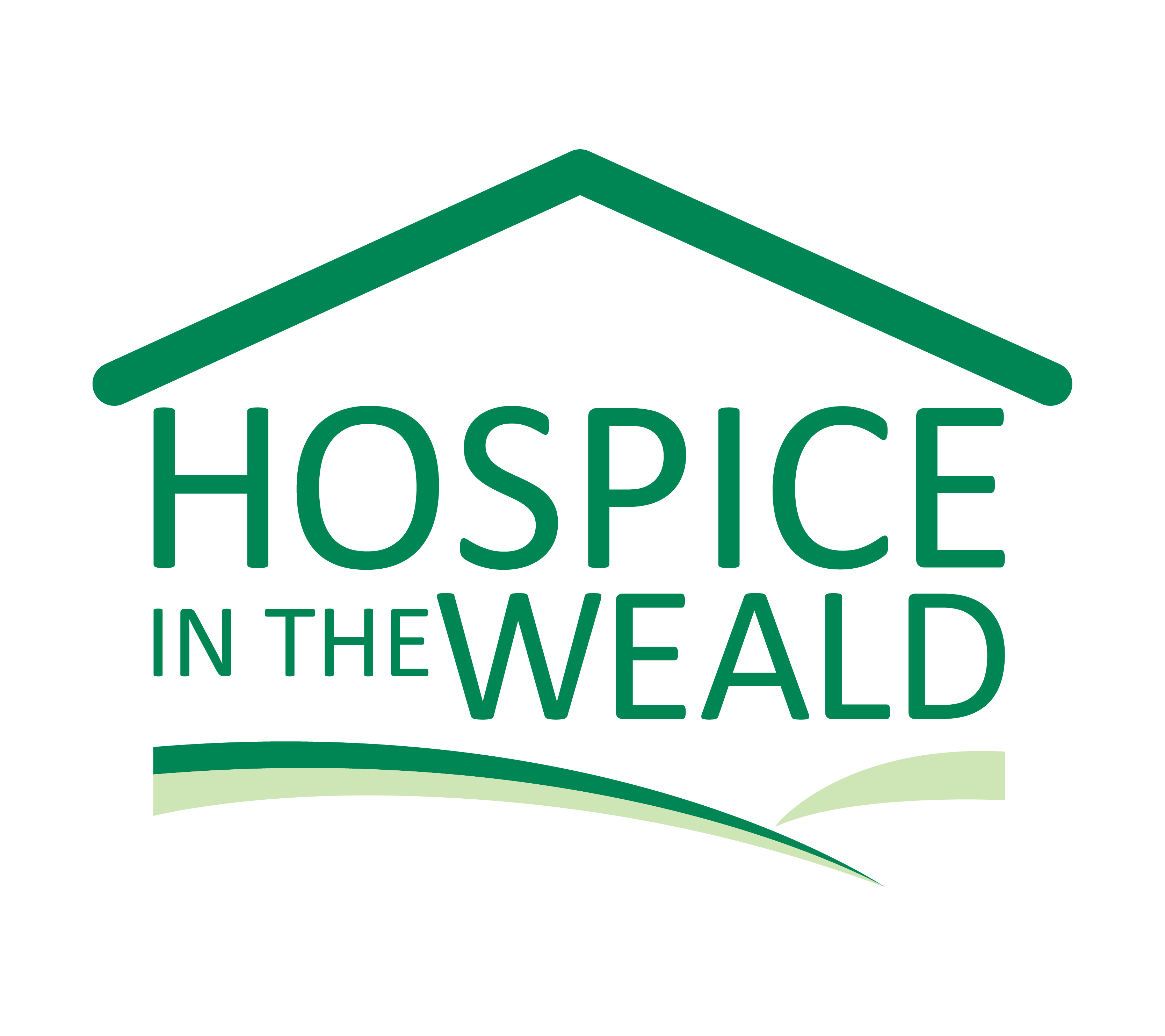Discover the care and support we offer
We provide Hospice care & support to patients and their loved ones living in Kent and East Sussex. Learn more about how we can help you.
If you or someone you love may benefit from Hospice care, you can find out more using the information below. For support or advice at any time of the day or night, please visit our Help Hub.

We provide Hospice care & support to patients and their loved ones living in Kent and East Sussex. Learn more about how we can help you.

Complete one of these short forms and we will contact you. There is no need to wait for a referral from your GP or healthcare professional.
We need to raise over £8 million every year to provide outstanding Hospice care to the local community. To get involved with our fundraising activities, design your own, or make a donation, use the information on this page.

Hospice care grew from a simple conviction: that every person, whatever their prognosis, deserves to live with comfort, meaning and agency. By focusing on pain relief, emotional wellbeing and family support, the hospice philosophy offers a holistic response for those with life‑limiting illness. When the patient is a child, that response must also nurture play, learning and precious memories.
Understanding how this specialised field evolved helps us appreciate why it remains so vital today, especially for families across the UK who turn to organisations like Hospice in the Weald for Children when the unthinkable becomes reality.

Long before the word “palliative” appeared in medical textbooks, Dame Cicely Saunders was documenting what she called total pain – the physical, emotional, social and spiritual distress she observed in the dying patients she nursed during the 1950s. Determined to change clinical attitudes, she qualified successively as a nurse, social worker and physician so her voice would carry weight in every consultation. Her words beautifully sum up her motivation and what hospice care is all about – “You matter because you are you, and you matter to the last moment of your life. We will do all we can not only to help you die peacefully, but also to live until you die”.
With philanthropic backing and resolve, she eventually opened St Christopher’s Hospice in Sydenham, London, in 1967. There, evidence‑based regimens, pain management, round‑the‑clock visiting and spaces for music, art and prayer co‑existed under one roof. The hospice ran formal research wards, issued peer‑reviewed studies on symptom control and trained thousands of clinicians each year, turning compassion into a reproducible model of care. In doing so, it reshaped the history of hospice care and propelled a worldwide hospice movement, now embedded in health policy across more than 140 countries.
The adult‑centred model could not simply be scaled down for children. Children’s conditions often span years, developmental milestones continue, and families juggle hope with anticipatory grief. Seeing this unmet need, Sister Frances Dominica, a paediatric nurse and Anglican nun, founded Helen House in Oxford in 1982, the world’s first children’s hospice. Its rainbow‑coloured bedrooms, hydrotherapy pool and sensory playrooms signalled that respite and joy were therapeutic in their own right, while on‑site paediatricians managed complex care. Crucially, they recognised the whole family as the unit of care and provided support that involves the family setting as much as possible.
Helen House became the blueprint for a nationwide network that now includes places like Rainbows in the Midlands (1994), Zoe’s Place in Liverpool (1995), CHAS’s Robin House in Scotland (2005), and Shooting Star Children’s Hospices serving London and Surrey (2005). Alongside residential stays, these services pioneered community nursing teams, neonatal outreach, music‑therapy sessions, memory‑making weekends and 24/7 advice lines. By adapting Dame Cicely’s principles to the complexities of childhood illness, they have written a vibrant new chapter in the history of hospices in the UK, ensuring that seriously ill children can live, and families can stay together, as fully as possible.

From Cornwall to the Highlands, 54 children’s hospices now support nearly 15,000 children each year. Yet need is rising faster than capacity: the number of children in England living with life‑limiting or life‑threatening conditions tripled to more than 86,000 between 2001 and 2018. Expanding community teams, outreach clinics, and in‑home respite is therefore essential to make sure no child is left behind. There is an especially strong need in the South East of England right now, owing to the lack of local services there. Hospice In The Weald reaches out as far as we can, bringing services to those who need them, as we campaign for more long-term solutions.
Evidence shows that introducing specialist palliative support from diagnosis, rather than only at the end of life, improves symptom control, reduces hospital admissions and gives families a trusted guide through complex choices. Yet fewer than one in five local authority areas offer children 24/7 access to combined nursing and consultant advice at home. Closing that gap remains a national priority, and a big part of that is continuing education and community involvement.
The field continues to evolve through clinical trials on symptom management, training programmes for community clinicians and shared learning networks such as Together for Short Lives. Sustainable funding – including renewed government grants and innovative charity partnerships – underpins every advance, ensuring that discoveries in one hospice quickly benefit children everywhere. Collaboration and communal support have always been the backbone of care, whether child, hospice or palliative.

Many families face long drives to larger children’s hospices, so Hospice in the Weald for Children brings expert care directly to them. On weekdays, nurses and play specialists make home visits for respite sessions, symptom control and practical advice, while counsellors support siblings at school and accompany families on hospital appointments. Our services range from tailored bereavement counselling and memory‑making photography to home‑based music therapy and equipment guidance – all free of charge and designed around each child’s routine.
Beyond medical needs, the team creates safe spaces for young people to enjoy “normal” childhood moments. Regular Stay‑&‑Play mornings in the Hospice gardens, art and LEGO clubs for siblings, and seasonal family days out ease isolation and give parents a breather. Age‑appropriate therapies, from drumming circles to sensory storytelling, promote expression and lift anxiety, and a rolling programme of group sessions lets families meet others on a similar journey. As the Children’s Service explains, “Our goal is to support each child’s development and emotional well‑being, and to tackle the loneliness the whole family can feel.”
All of this is powered by a community of more than 1,000 local hospice volunteers, shop teams and challenge‑event fundraisers who help raise the £9 million the Hospice must find every year. Whether you fancy a Saturday shift in one of the charity shops, joining a sky‑dive or Camino trek, or applying for a clinical post, the Join Our Team hub for hospice staff and volunteers lists current roles and training routes. Supporters can also create their own events, like bake sales or golf days, with some resources and advice provided by the fundraising office. Every hour given and every pound raised stays in the Weald, ensuring children continue to receive vital support close to home.
From Dame Cicely Saunders’ first ward in Sydenham to the colourful playrooms of children’s hospices today, the history of the hospice movement in the UK is a story of relentless compassion and innovation. Each milestone, like better pain relief, family‑centred care, and research‑driven practice, has moved us closer to a world where no child or parent faces life‑limiting illness alone. Yet history is still being written. Expanding access, embedding palliative principles from the moment of diagnosis and funding the research that will shape tomorrow’s therapies all demand continued commitment.
Hospice in the Weald for Children stands ready to play its part, walking alongside families for as long as they need. The work still ahead reminds us that hospice care is not about surrendering hope; it is about safeguarding quality of life for days filled with laughter, comfort and love, whatever the future holds. That, ultimately, is the compassionate journey that began more than half a century ago and still guides us today. Contact our team if you would like to support us or take part in a local event.


